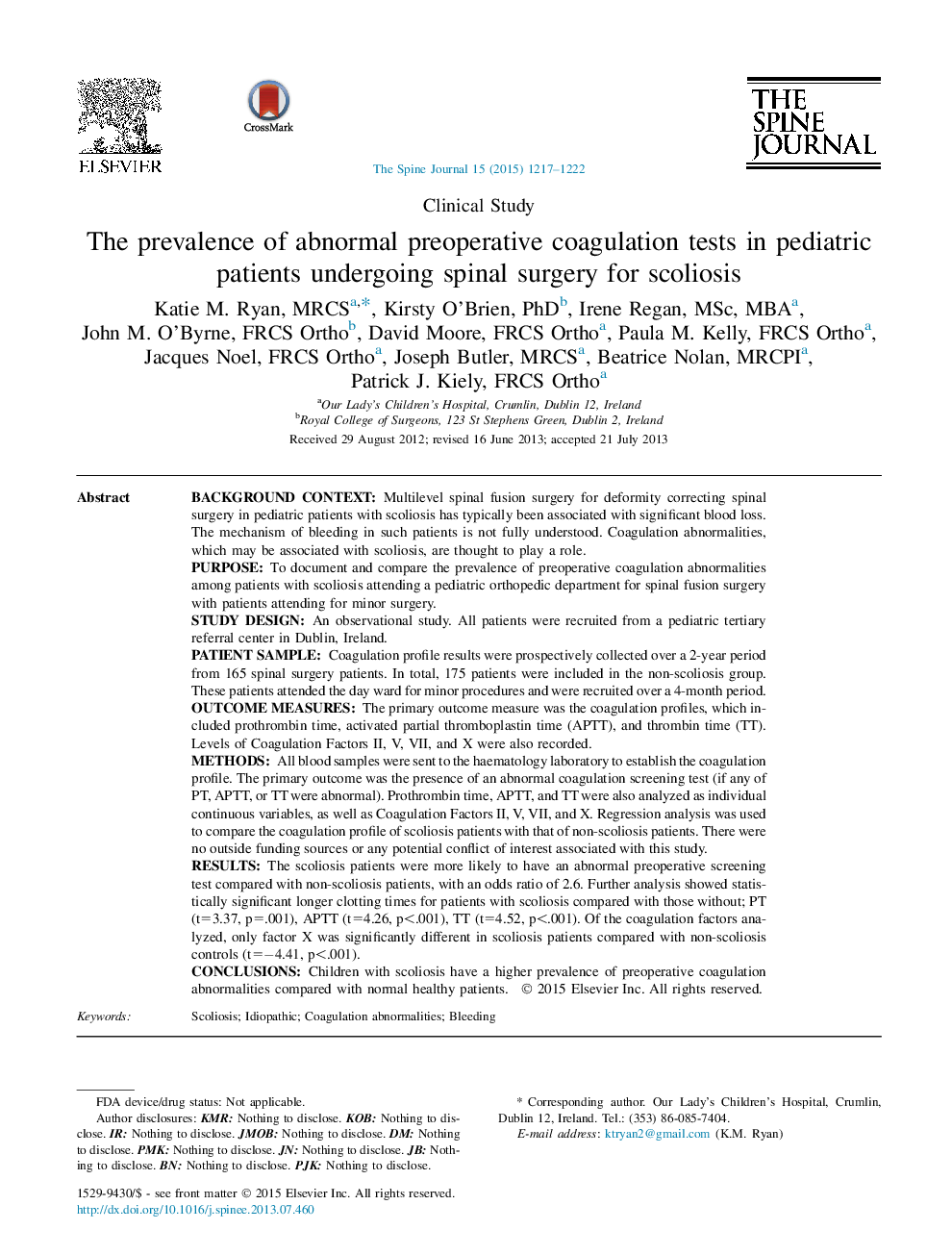| Article ID | Journal | Published Year | Pages | File Type |
|---|---|---|---|---|
| 6211881 | The Spine Journal | 2015 | 6 Pages |
Background contextMultilevel spinal fusion surgery for deformity correcting spinal surgery in pediatric patients with scoliosis has typically been associated with significant blood loss. The mechanism of bleeding in such patients is not fully understood. Coagulation abnormalities, which may be associated with scoliosis, are thought to play a role.PurposeTo document and compare the prevalence of preoperative coagulation abnormalities among patients with scoliosis attending a pediatric orthopedic department for spinal fusion surgery with patients attending for minor surgery.Study designAn observational study. All patients were recruited from a pediatric tertiary referral center in Dublin, Ireland.Patient sampleCoagulation profile results were prospectively collected over a 2-year period from 165 spinal surgery patients. In total, 175 patients were included in the non-scoliosis group. These patients attended the day ward for minor procedures and were recruited over a 4-month period.Outcome measuresThe primary outcome measure was the coagulation profiles, which included prothrombin time, activated partial thromboplastin time (APTT), and thrombin time (TT). Levels of Coagulation Factors II, V, VII, and X were also recorded.MethodsAll blood samples were sent to the haematology laboratory to establish the coagulation profile. The primary outcome was the presence of an abnormal coagulation screening test (if any of PT, APTT, or TT were abnormal). Prothrombin time, APTT, and TT were also analyzed as individual continuous variables, as well as Coagulation Factors II, V, VII, and X. Regression analysis was used to compare the coagulation profile of scoliosis patients with that of non-scoliosis patients. There were no outside funding sources or any potential conflict of interest associated with this study.ResultsThe scoliosis patients were more likely to have an abnormal preoperative screening test compared with non-scoliosis patients, with an odds ratio of 2.6. Further analysis showed statistically significant longer clotting times for patients with scoliosis compared with those without; PT (t=3.37, p=.001), APTT (t=4.26, p<.001), TT (t=4.52, p<.001). Of the coagulation factors analyzed, only factor X was significantly different in scoliosis patients compared with non-scoliosis controls (t=â4.41, p<.001).ConclusionsChildren with scoliosis have a higher prevalence of preoperative coagulation abnormalities compared with normal healthy patients.
